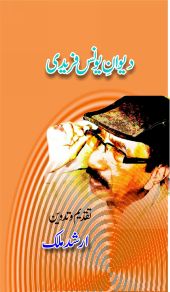بیوقوف بلی تے سیانے چوہے
پرانے زمانے دی گل اے کہ اک گھر وچ بلی رہندی سی۔ اوس دے تن بچے وی سن۔ بلی انتہائی بدمزاج تے لڑاکی سی۔ چھوٹی چھوٹی گل تے لڑنا اوس دی عادت سی۔ جس پاروں اوس نوں کوئی وی پسند نئیں سی کردا تے نا ای دوستی۔ جے کر اوہدے کولوں کوئی چیز منگن آندا تاں بلی اوس دی بے عزتی کردیندی۔ انتہائی کنجوس بلی ہر ویلے اپنے کول اک تھیلا رکھدی سی۔ اوس تھیلے وچ اوہنے اپنے بچیاں لئی کھان دا سامان رکھیا ہوندا۔ جے کر کوئی اوس کول کھان لئی کوئی شے منگدا تاں بلی اوس نوں نئیں سی دیندی۔ تھیلے وچ کیہ کجھ اے ایس بارے صرف بلی ای جاندی سی کہ ایس نے تھیلے وچ کوئی قیمتی شے لکائی ہوئی اے۔ ایس لئی اوس محلے دے سارے جانور خاص طور تے چوہے ایس ٹوہ وچ رہندے کہ ویکھیا جاوے کہ تھیلے وچ بلی نے کیہ کجھ لکویا اے ایس بارے صرف بلی ای جاندی سی۔ باقی دے جانوراں نوں ایہو پتہ سی کہ بلی نے ایس تھیلے وچ کوئی قیمتی شے لکائی ہوئی اے۔ پر بلی تھیلا ویکھن دا کوئی وی موقع کسے نوں نہ دتا۔
اک دن محلے دے سارے چوہے اکٹھے ہوئے تے پروگرام بنایا کہ بلی نوں اپنے بچیاں نال بہت پیار اے۔ جدوں رات نوں بلی سوں جاوے گی تاں اسیں اوس دے بچیاں دے کپڑے پاء کے آرام نال تھیلے دی تلاشی لے لواں گے۔ ایس دران جے بلی دی اکھ کھل وی گئی تاں اوہ اپنے بچے سمجھ کے ساہنوں کجھ وی نئیں آکھے گی۔
پروگرام دے مطابق جدوں ادھی رات نوں بلی تے اوہدے بچے گہری نیند سوں گئے تاں کجھ چوہے بلی دے کمرے وچ داخل ہوئے پہلاں اوہناں بلی دے...
Ethical Education is an optional subject in lieu of Islamic Studies for non-Muslim students in Pakistan from primary to undergraduate level. The main aim of this study is to discuss factors which can help to design a Moral Ethic curriculum which would assist the teachers to educate an individual with his/her own identity, to assimilated by ethical values with developed moral judgment and behavior established by an individual’s beliefs. Students can show a positive attitude towards themselves and others and be able to work together and support others. In this perspective, we also illustrated that moral education helped those people who respect social norms and behave sensibly in any situation belonged to present or future. Therefore, the main objective of this research paper is to establish the necessary elements that should be the part of an effective Moral Ethics curriculum in order to create a democratic and educational environment where everyone can respect for others’ beliefs and stop violating others’ feelings on the basis of freedom of speech. In this study, our targeted readers were included teachers of Moral Ethics, policy makers at different levels, and curriculum developers.
In the present research project, the adsorption capability of clay and the magnetic properties of iron oxides were combined in composite forms for the preparation of magnetic adsorbents. Biocomposites of clay were also prepared with biomass. The prepared magnetic composites may well be efficiently used as adsorbent for a large variety of pollutants in water which could be efficiently excluded from the medium by an easy magnetic process. Clay and iron oxide magnetic composites were prepared by using different molar ratio of MnCl2 and FeCl3 i.e., 1:2, 1:3, 2:3 and characterized by powder XRD, TGA, and FTIR. The batch mode experiments were established for comparing the adsorption capability of native clay, the prepared MnFe2O4/clay composite and biocomposite forms of adsorbents for elimination of the basic dyes. Imperative method parameters like adsorbent dose, pH, initial concentration of dyes, operating temperature and contact time were optimized through batch mode of study. The experimental results showed that pH 6-9, low adsorbent dosage and lower temperature were the viable conditions for maximum adsorptive exclusion of dyes. Different kinetic models were employed to the records obtained by adsorptive removal of the four basic dyes and was noticed that pseudo-second-order kinetic model fitted the best onto the experimental results. Mechanism of the adsorption phenomenon was explained by application of different equilibrium isotherms on the data and Langmuir adsorption isotherm was observed to be the most fitted model on experimental results of the studied dyes. Thermodynamic study revealed that adsorption phenomenon was more viable at lower temperatures as shown by lower ∆G values. The negative values of ∆H indicated the exothermic nature of adsorption phenomenon. The column mode study was performed to optimize the initial dye concentration, bed height and flow rate. Higher bed heights, higher initial dye concentrations and lower flow rates were observed to be more complimentary conditions for maximum adsorptive removal in column mode experiments. The whole study proved that the prepared clay composites can be efficiently utilized for the removal of dyes for wastewater treatment.



